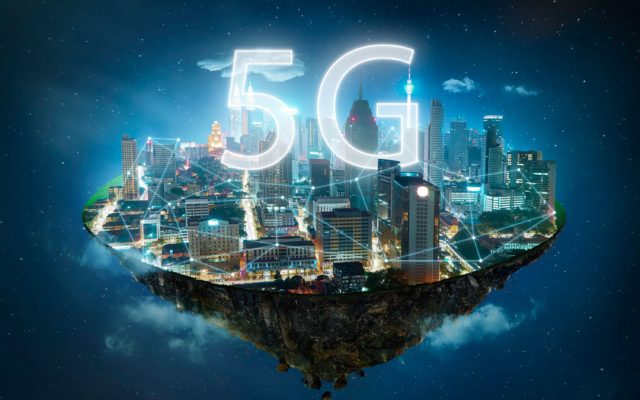Based on recent studies into 5G, it’s expected that over the next decade (2019-2028) multimedia content companies will compete for nearly 3 trillion dollars in revenue opportunities, with 5G networks representing almost half of this revenue opportunity (almost $ 1.3 trillion).
The report predicts that as early as 2025, 57% of the global revenues of wireless multimedia content will be generated using 5G networks and devices connected to the 5G.
A very important example will be that thanks to the low latency of these networks no video will stop and the download of large files will be very fast. The 5G will accelerate content consumption and will enhance experiences with a wide range of new immersive and interactive technologies.
The evolved 3G and 4G networks would offer an inadequate service, as their capacity would not be enough to handle the increase in video display time, the evolution of content at higher resolutions, and the greater number of embedded multimedia content and immersive experiences.
Beyond multimedia content and entertainment, all sectors must adapt to radical changes in the business environment, consumer habits and public expectations.
Companies are trying to predict how the 5G will transform and revolutionize their sectors, society and even global competitiveness, finance and operations speed as well as starting to define their strategy to embrace 5G’s capabilities.
An important mission will be for companies to make the most of this new technology and in particular in companies operating in sectors where multimedia speed is everything. We think of the “Fintech” companies, with the management of both an electronic wallet and information on the network, intertwined with common business.
The term 5G defines the “fifth generation” and refers to the set of requirements, for devices and networks, that determine compatibility with a given standard. Describes the technologies necessary to make a certain type of communication work.
5G should provide an increasing speed of mobile broadband up to 10 Gbps and ensure more reliable wireless connections, integrating LTE, Wi-Fi and IoT mobile technologies, along with at least one new 5G radio interface.
5G will use unique radio frequencies (from 30 GHz to 300 GHz) to achieve what 4G (below 6 GHz) networks cannot. The 5G uses shorter wavelengths, thus smaller antennas than the existing antennas (4G) while providing precise directional control, this will support over 1,000 devices per meter (5G), compared to that supported by 4G, transmitting compared to 4G ultra-fast data to many more users, with high accuracy and low latency.
In a FWA (Fixed Wireless Access) configuration where there is a direct wireless connection between the tower and the user’s device, 5G has a maximum download rate of 20 Gb/s while the 4G is only 1 Gb/s and it is estimated that the 5G will provide at least a download speed of 100 Mb/s compared to 4G networks that are smarter than 10 Mb/s, which should make the 5G at least 10 times faster than 4G.
5G promises to offer speeds above 1 Gb/s (1000 Mbit/s), with many estimates approaching 10 Gb/s (10000 Mbit/s).
It will also have a much lower latency, which means you will see very little delay or delay when using your phone or other devices – we are talking milliseconds, which are not detectable as users:
- 4G Network 45ms (actual)
- 5G Network 1ms (theoretical)
Although higher bands are faster they don’t carry information as far so 5G will see a lot more, smaller multiple input and output (MIMO) antennas to boost signals and capacity. Estimates suggest that this means 5G will support up to 1,000 more devices per metre than 4G.
Many international organizations such as ITU and IEEE, are working around 5G, and also organizations that have been involved in the development or evaluation of 3G and 4G standards – such as GSMA (GSM Association), 3GPP and NGMN (Next Generation Mobile Networks) Alliance – and from recently formed groups such as 5GPPP (5th generation Public Private Partnership) and 5G Americas.
In the last improvements that will be integrated in the 5G, ie machine-to-machine communications and support for small cells, the characteristics of some standards released by 3GPP that showed incremental changes and improvements were examined.
Ofcom – a regulatory body in the UK, is responsible for the allocation and licensing of frequency bands. 5G requires a larger spectrum than is currently available, and they are looking for a solution to accommodate 5G and other new technologies.
There is the possibility of spectrum sharing, such as for TVWS frequencies, which are generally lower (from 470 to 790 MHz in the United Kingdom). However, these signals propagate over long distances and are seen as potentially endowed with the Internet of Things and of enormous machine-type communications.
Ofcom has also identified three bands to enable 5G in Europe (Ofcom, 2017):
- 700MHz
- 3.4 GHz
- 26 GHz
There is a particular interest in the use of smaller cells and higher frequencies. The band at 26 GHz, 32 GHz and 40 GHz, are interesting for several reasons:
- cost reduction in radio and antenna technologies,
- the prospect of enormous bandwidth
- the overcrowding of microwave frequencies (100 MHz – different GHz)
Initially the launch date was supposed to be 2020 but it could be even longer until the 5G network has full coverage across the UK.
As written in the Evening Standard last year it takes a long time to develop and test the technology, even if progress has been made in recent months.
At the beginning of 2018, Ofcom has organized a 5G auction, in which operators have spent a total of £ 1.35 billion to test their services on the United Kingdom’s airwaves. The challenge is to be able, by 2020, to cover as much of the UK as possible.
The challenge will be to give everyone the opportunity to have 5G technology in the UK, increasing the speed in terms of time, and performance in terms of production, with a much more precise and fast technology.
Article by channel:
Everything you need to know about Digital Transformation
The best articles, news and events direct to your inbox
Read more articles tagged: Featured, Internet of Things









